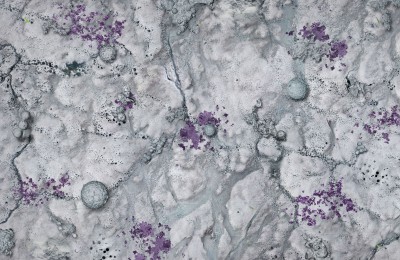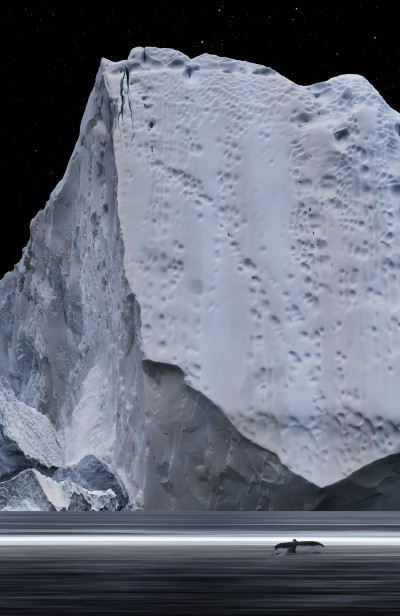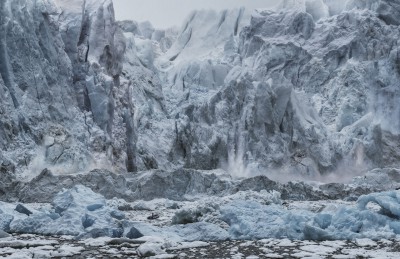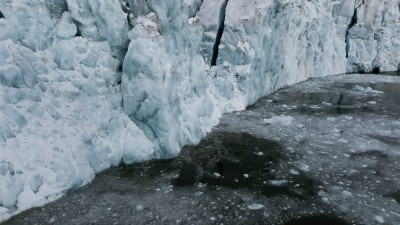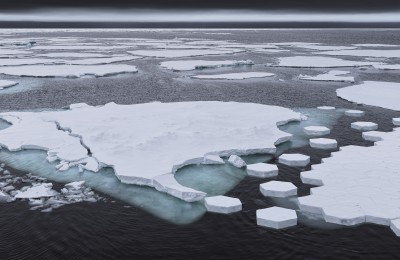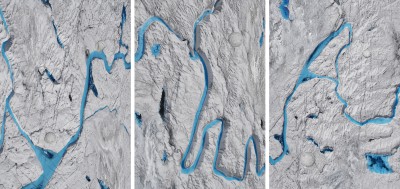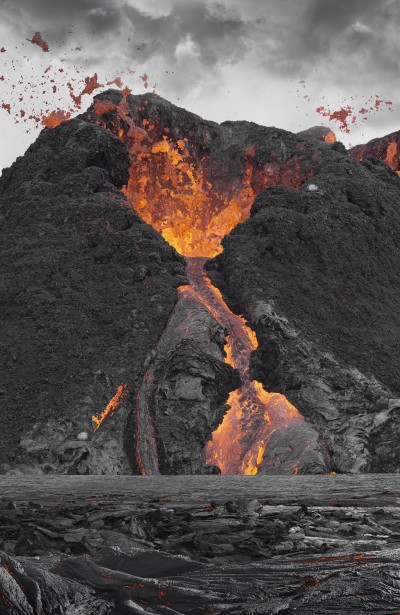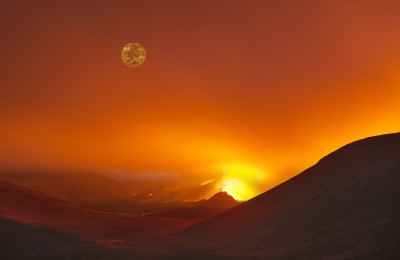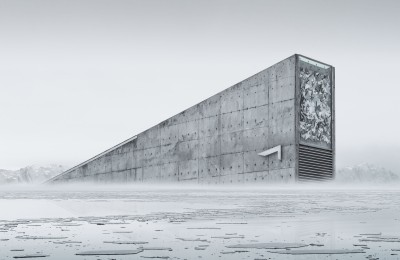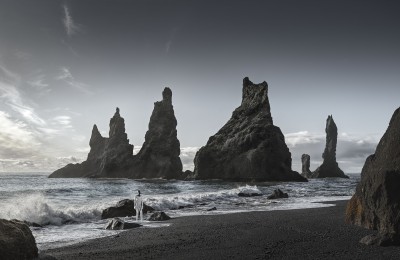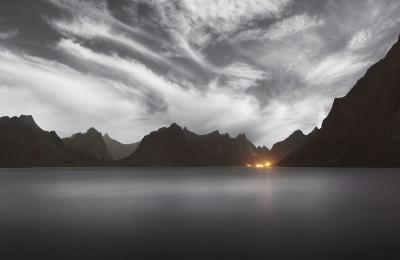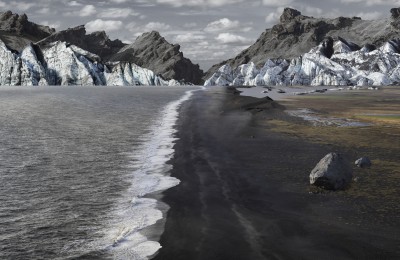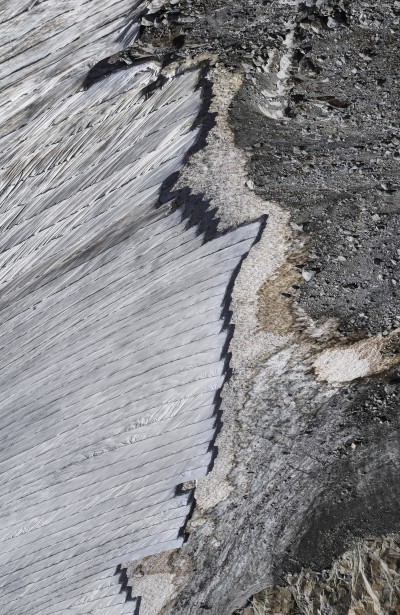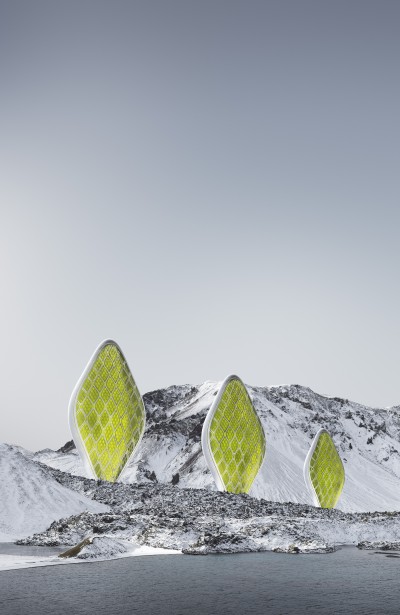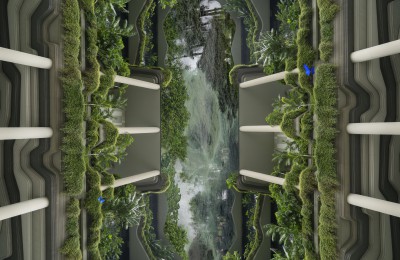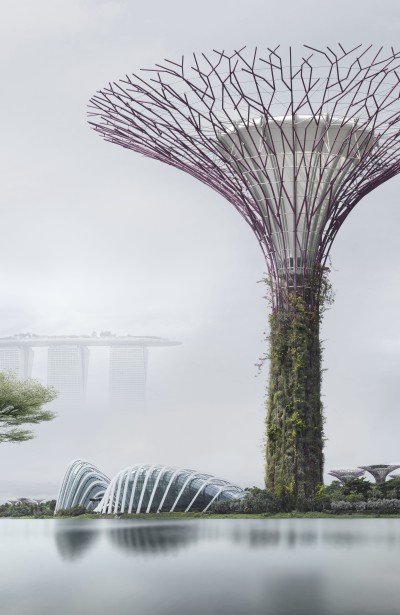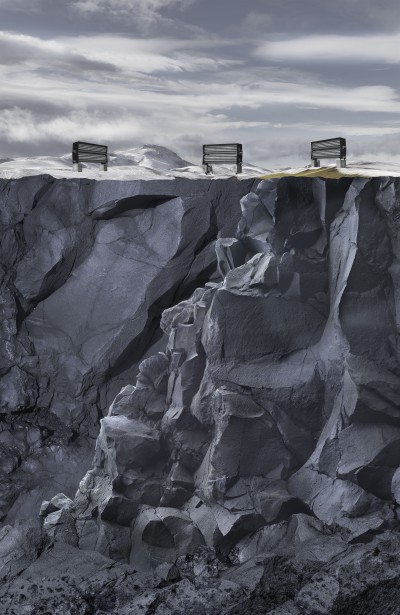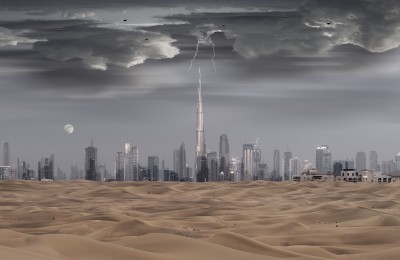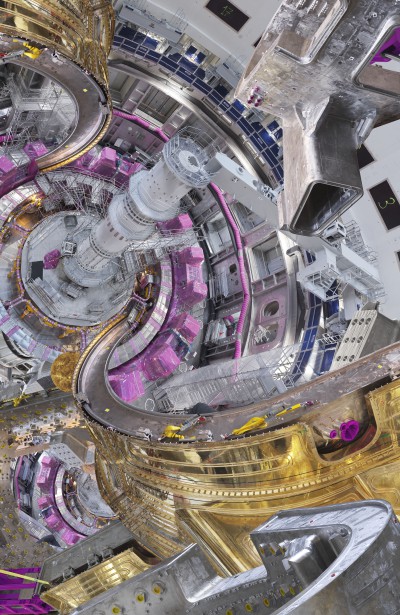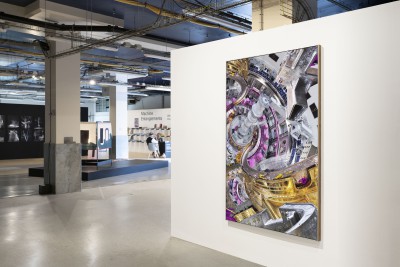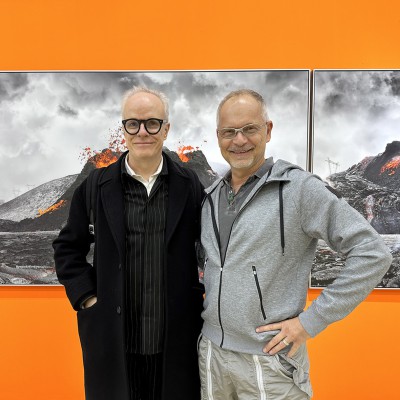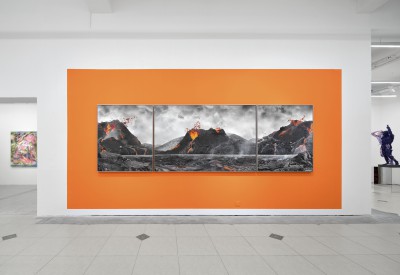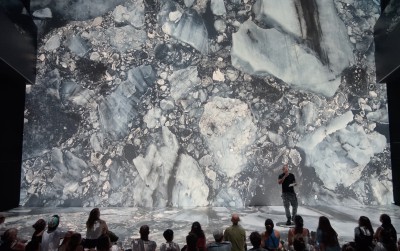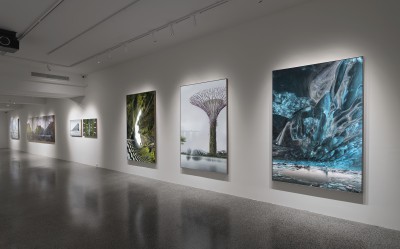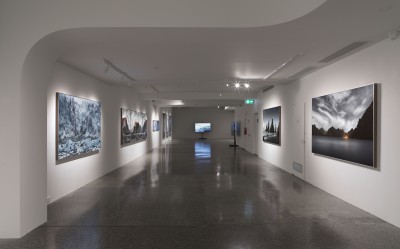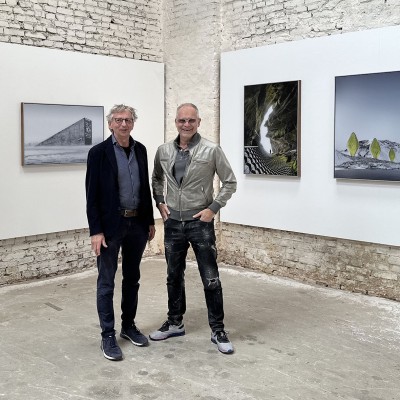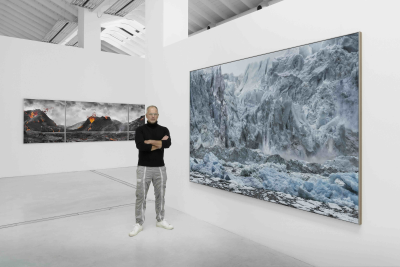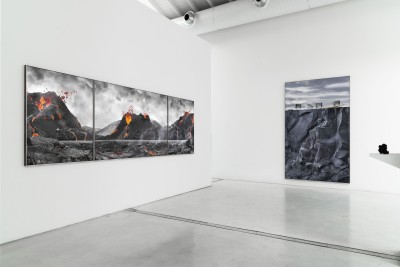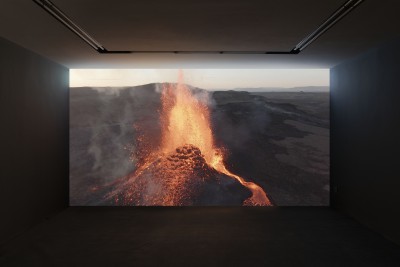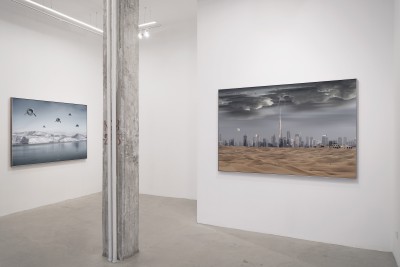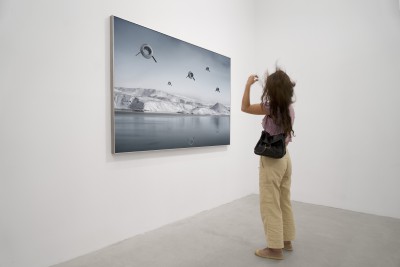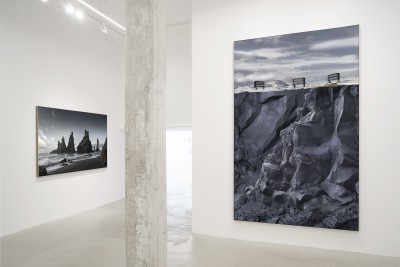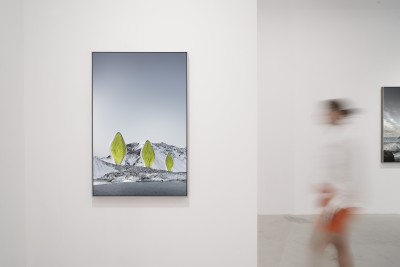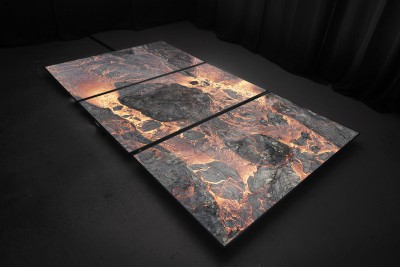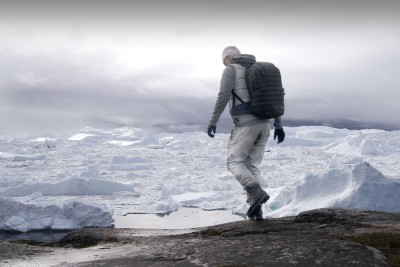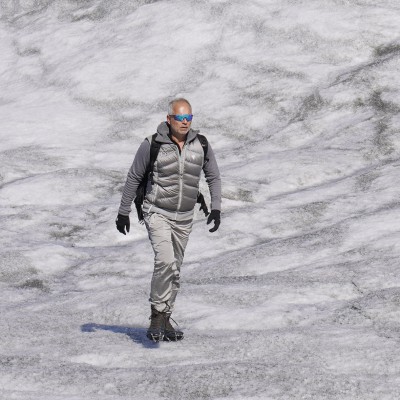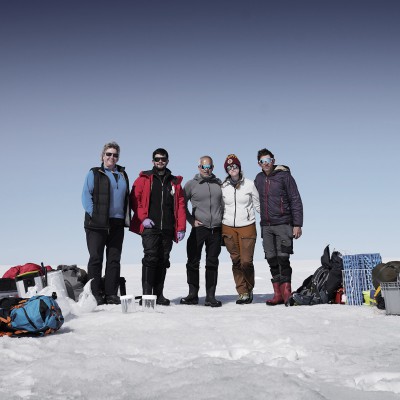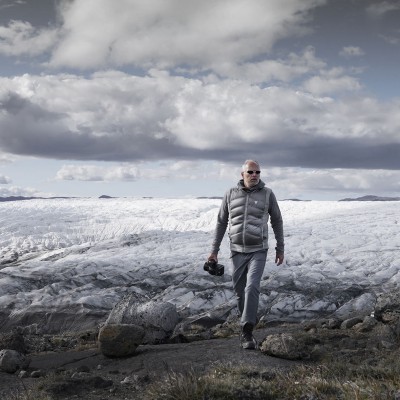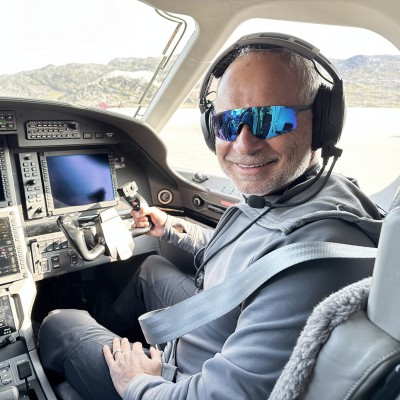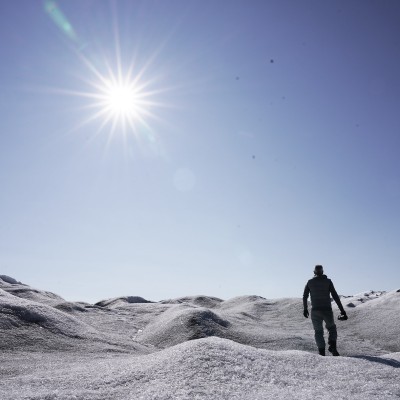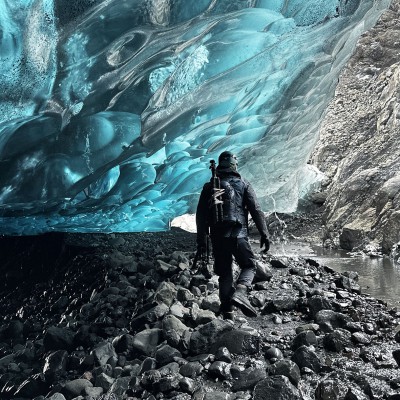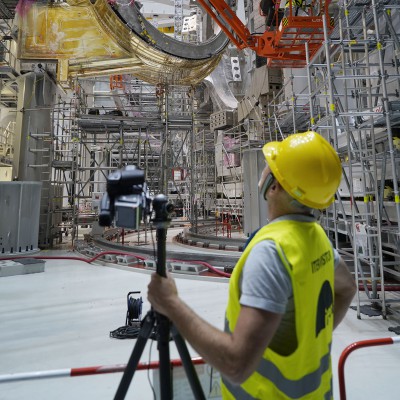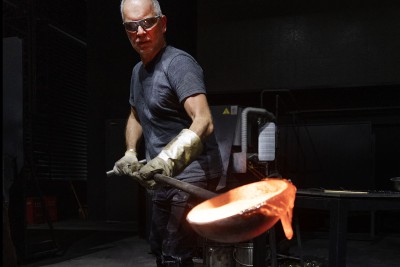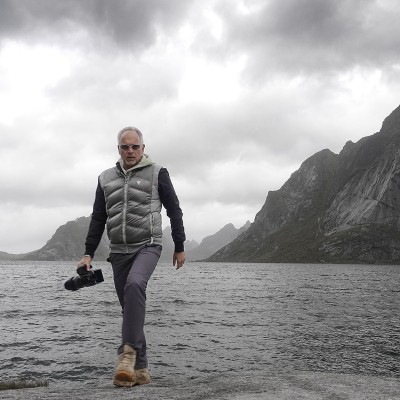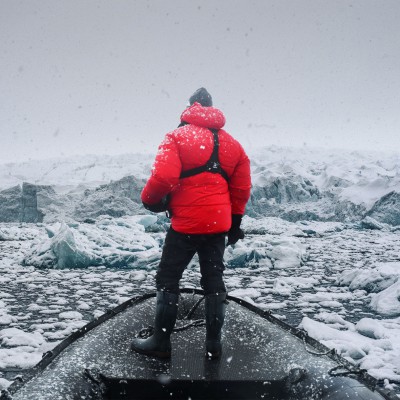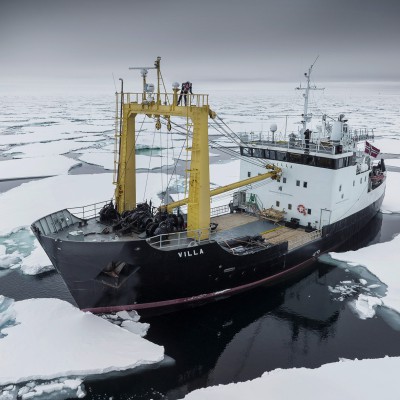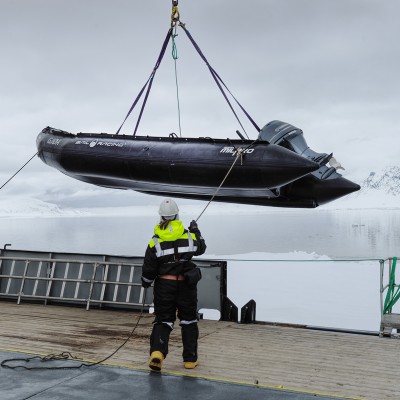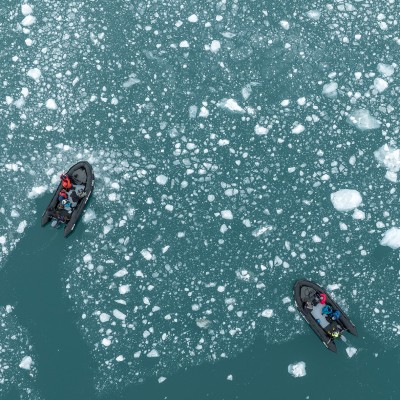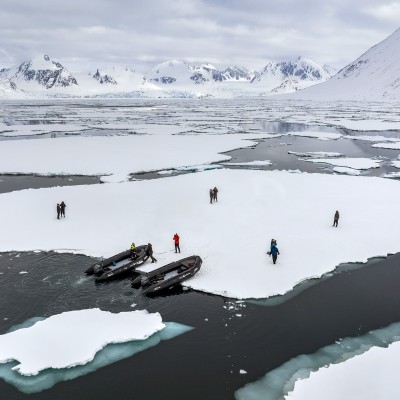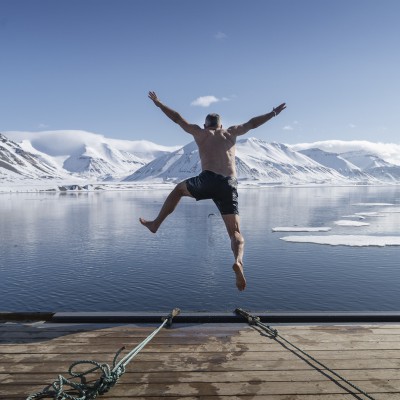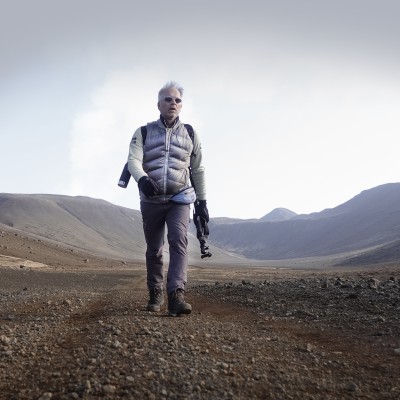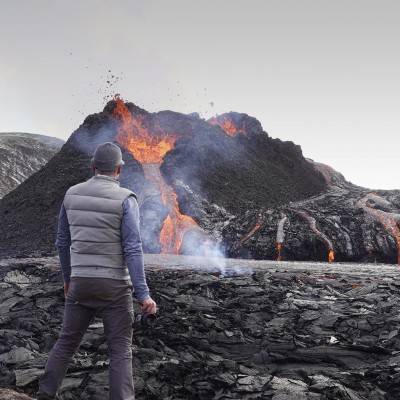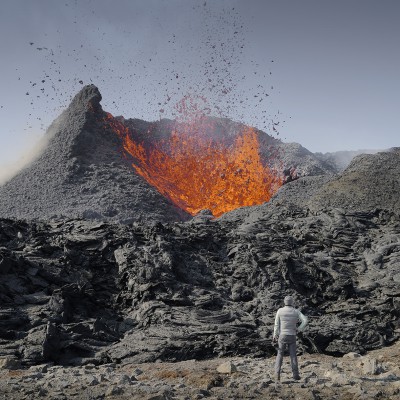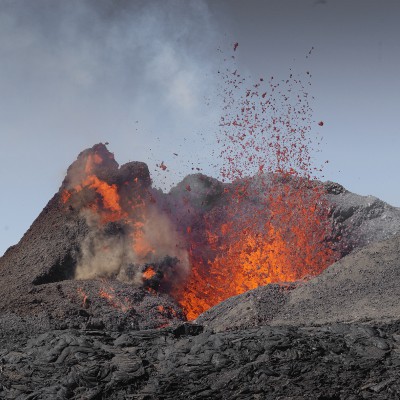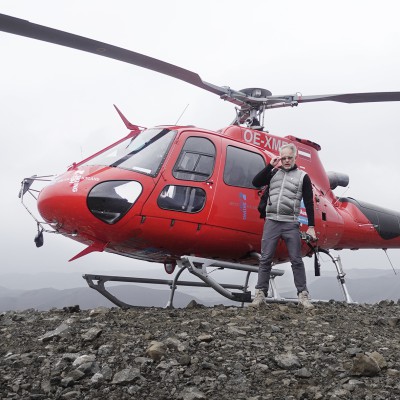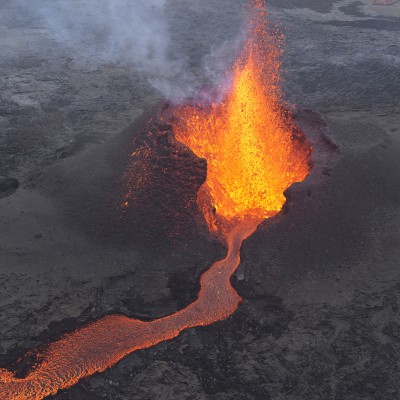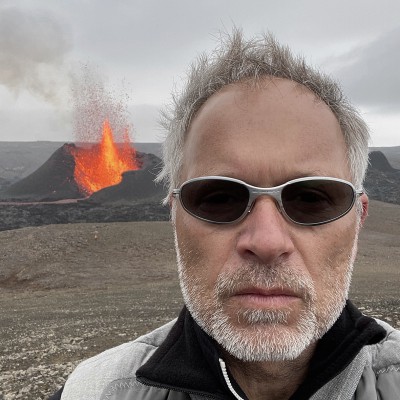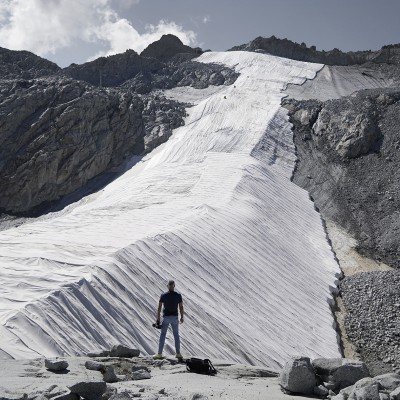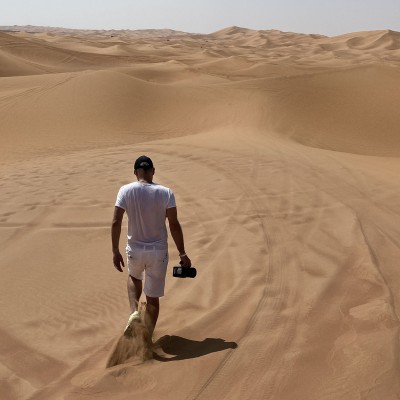
eruption
Format 1: 132 x 110 | 132 x 202 | 132 x 110 cm / 52 x 42 | 52 x 79 | 52 x 42 in, edition of 6 + 2 AP
Format 2: 67 x 54 | 67 x 102 | 67 x 54 cm / 26.4 x 21.3 | 26.4 x 40.2 | 26.4 x 21.3 in, edition of 6 + 2 AP
Hybrid photography, archival pigment print, aludibond, diasec, custom-made wood / aluminium frame
Volcanoes have shaped the form of our Earth. They stand as symbols for the geological cycles of destruction, rejuvenation and recreation that have marked the Earth’s history. If we look at volcanoes through a geological time horizon, it becomes clear that they also play an important role in terms of climate change. Volcanic eruptions can enrich the stratosphere with climate-altering gasses, as these form an aerosol layer that reflects solar radiation back into space, thereby lowering the temperature on the surface of the Earth. Conversely, climate change can also have an impact on volcanic activity: if global temperatures climb, ice masses melt and sea levels rise, which in turn significantly alter the stresses in the Earth’s plates near volcanoes and increase the risk of eruptions. In heavily glaciated regions, such as Iceland, there could be a connection between the retreat of glaciers and the associated pressure relief on the lithosphere. This would lead to an increasing number of eruptions and widespread reshaping of the Earth’s surface. Volcanoes also provide a blueprint for climate engineering or targeted technical intervention in the climate balance. This also includes methods known as solar radiation management that directly alter the Earth’s heat balance. Scientists are discussing the possibility of mimicking a volcanic eruption to curb global warming through the targeted injection of sulphate aerosols into the atmosphere. At the same time volcanoes are an inexhaustible source of energy for geothermal power generation, a technique that is used extensively, especially in Iceland.
The artwork “eruption” visualises the energy and transformative power of volcanoes. The concept of the triptych is based on photographs taken in Iceland shortly after the eruption of the Fagradalsfjall volcano in March 2021. For several days the artist scaled the mountains in the Geldingadalir Valley, to approach the erupting craters with his camera from different perspectives. The lava fountains shot up to 200m in the air, new fissures opened up again and again, pouring out lava. Huge streams of molten rock flooded the valley, creating a new landscape that changed daily. The triptych unfolds an arc of tension between compositional form and visual eruption. Different perspectives were stitched together to form a new post-natural landscape whose grey-black tones contrast with the glowing orange-red of the lava. Small silver domes and power pylons refer to Iceland’s pioneering geothermal technology, but also to mankind’s intervention in nature. The composition of the clouds is based on shots of hot steam from a geothermal plant. The volcanic mountain in the middle section resembles a reclining face; its body appears to continue in the right-hand section with lava oozing from the “head”, “mouth” and “chest” – an allegory to James Lovelock‘s Gaia hypothesis, which postulates that the Earth and its biosphere can be viewed as one single living being. The artwork visualises nature’s irrepressible power of creation and renewal; while at the same time, as the viewer’s gaze returns to the “body” of nature, its state of vulnerability and increasing destruction are also revealed.
